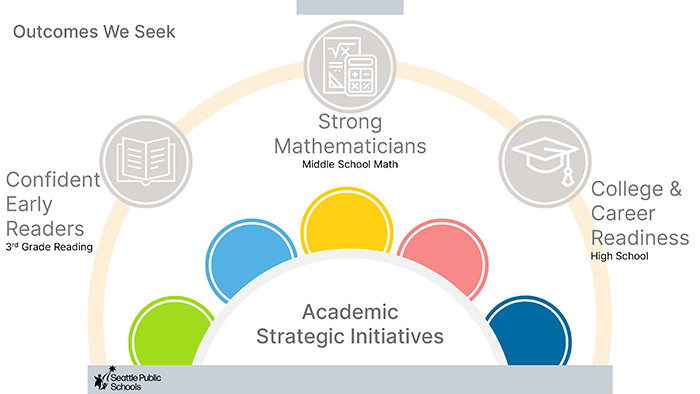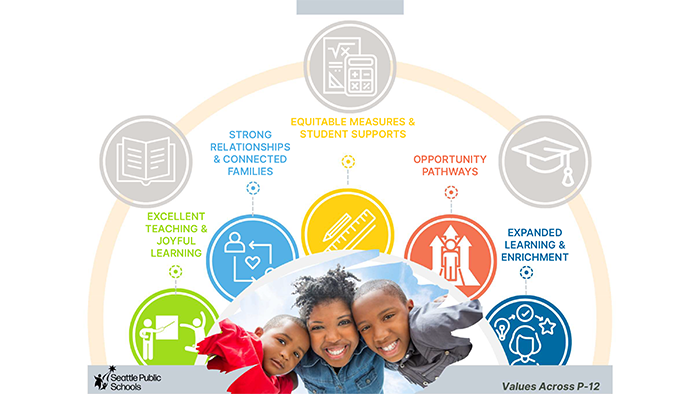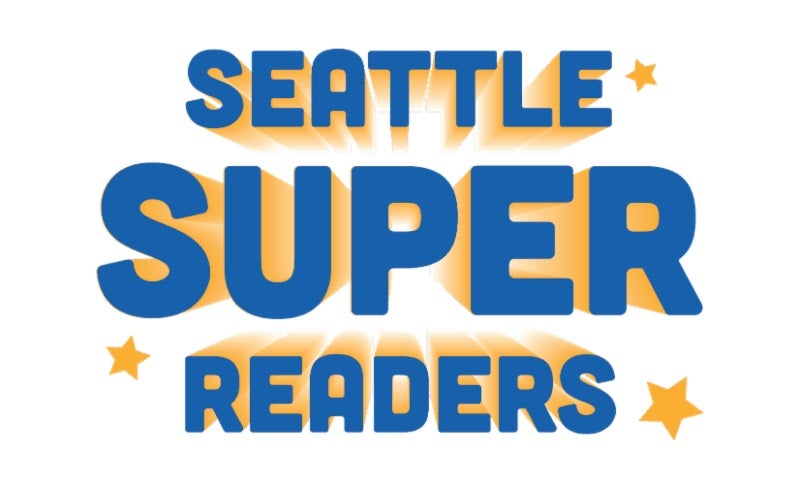Strategic Plan
Seattle Public Schools Strategic Plan: Seattle Excellence 2019-2024
We are currently working on the Strategic Plan 2025-2030.
At Seattle Public Schools, we are working to dramatically improve academic and life outcomes for Students of Color by disrupting the legacies of racism in our educational system. This work supports our commitment to make sure every student graduates prepared for college, a career, and community participation.
Seattle Excellence, our five year strategic plan, is guided by four priorities and is laser focused on supporting Students of Color who are furthest away from educational justice, beginning with African American boys and teens.
Our strategic plan is not about changing students. This work is about changing broken systems and undoing legacies of racism in public education. By actively becoming an anti-racist educational system – and ensuring students furthest away from educational justice thrive – conditions in Seattle Public Schools will improve for all.
” Success is seen as being famous or rich. We only talk about Black Excellence in relation to people like Obama, but by doing so, we are limiting that definition to ‘I need to be a famous athlete or President of the U.S.’ to be successful. Black Excellence is also having a normal life, feeling like you are part of the community. ”
– Seattle Public Schools Student
Seattle Excellence is guided by the vision and principles of targeted universalism—a strategic framework where targeted and differentiated efforts are required to meet the needs of specific student populations, so every student meets the universal goal. SPS is focused on African American boys and teens meeting academic goals, which will result in greater academic success for all our students. This video from The Othering & Belonging Institute at UC Berkeley provides a brief introduction to the concept and the practical applications of targeted universalism in society and our schools.
Why are We Starting with African American Boys and Teens?
We believe an intentional focus on the academic, cultural, and social-emotional well-being and strengths of African American boys and teens will move us toward educational justice for all Students of Color.
We are committed to promoting a strength-based and accurate narrative about our African American boys and teens, normalizing excellence and making sure they have the resources and support they need to reach their fullest potential.
Learn more about African American Male Achievement at Seattle Public Schools.
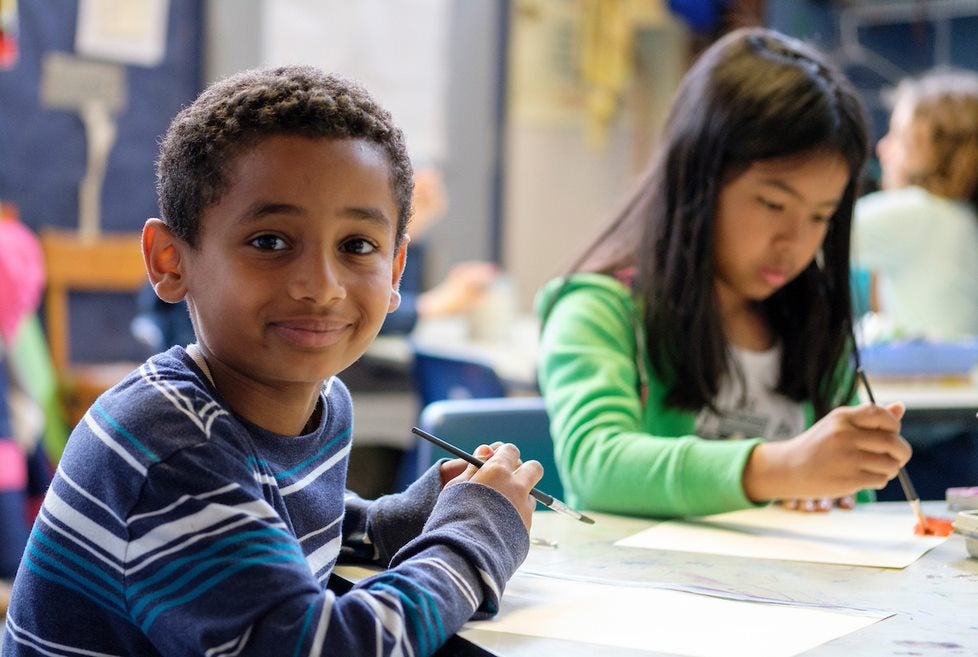
These are Our Priorities and Goals
Seattle Excellence focuses on four priorities to eliminate opportunity gaps and to ensure every student will receive a high-quality, world-class education. We are focused on these three goals: making sure all students read at grade level by the end of third grade; safe and welcoming schools; and culturally responsive professional practice and instruction.
High-Quality Instruction and Learning Experiences
We will educate through high-quality instruction and learning experiences that accelerate growth for Students of Color who are most impacted by racist systems.
Culturally Responsive Workforce
We will develop a culturally responsive workforce so teachers, leaders, and staff can effectively support students and families.
Predictable and Consistent Operational Systems
We will develop operational systems that provide a predictable and consistent experience to meet the needs of students and families and allow them to focus on learning.
Inclusive and Authentic Engagement
We will partner with students, families, and communities who are most impacted by racist systems by conducting inclusive and authentic engagement.
This is How We Get it Done
- Allocate resources strategically through a racial equity analysis process
- Deliver high-quality, standards-aligned instruction across all abilities and a continuum of services for learner
- Create healthy, supportive, culturally responsive environments from the classroom to central office
- Directly and consistently work in partnership with families and communities who represent Students of Color
- Make clear commitments, deliver on them, and continuously analyze impacts on students and families for improvement
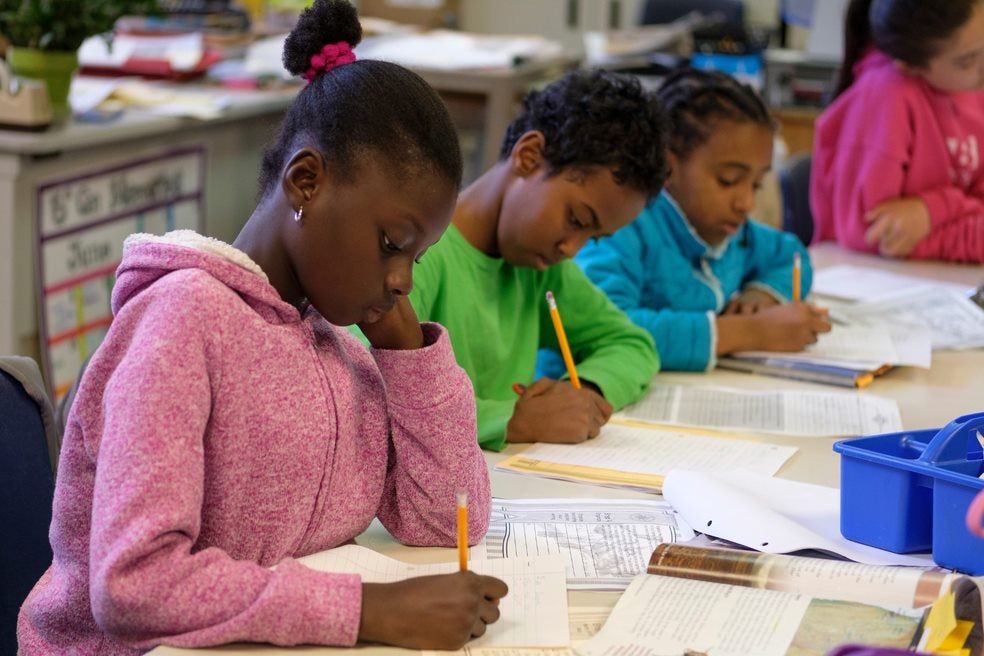
Mission
Seattle Public Schools is committed to eliminating opportunity gaps to ensure access and provide excellence in education for every student.
Vision
Every Seattle Public Schools’ student receives a high-quality, world-class education and graduates prepared for college, career, and community.
Resources
Department of African American Male Achievement (AAMA)

